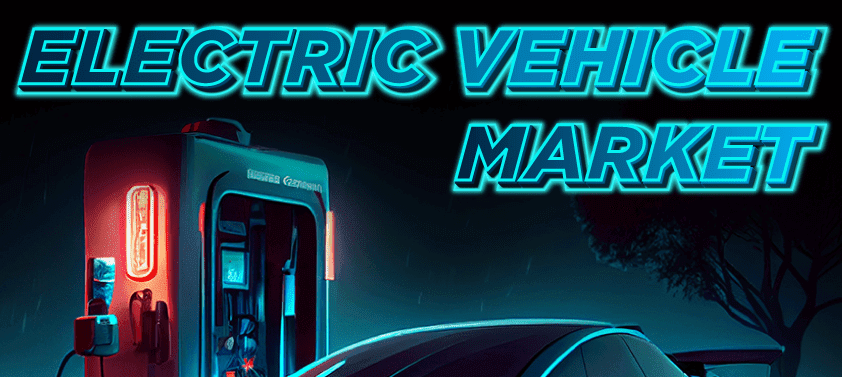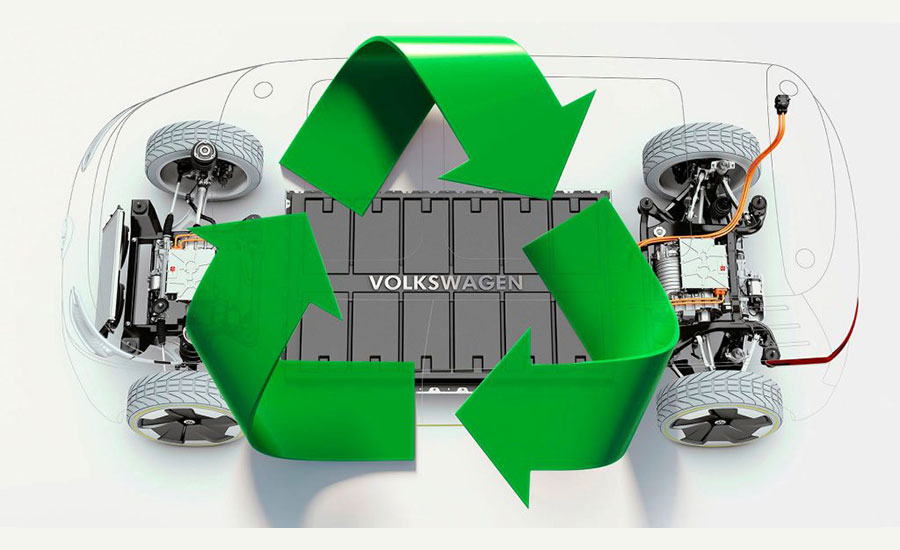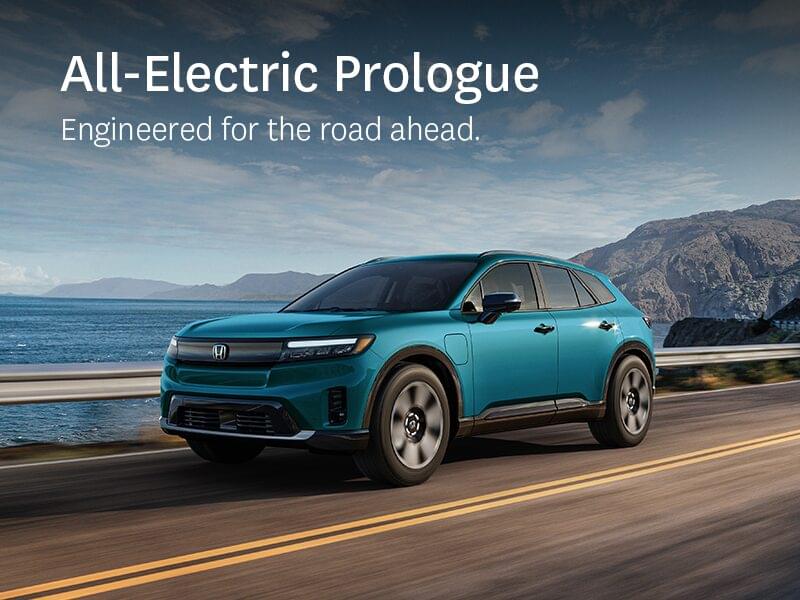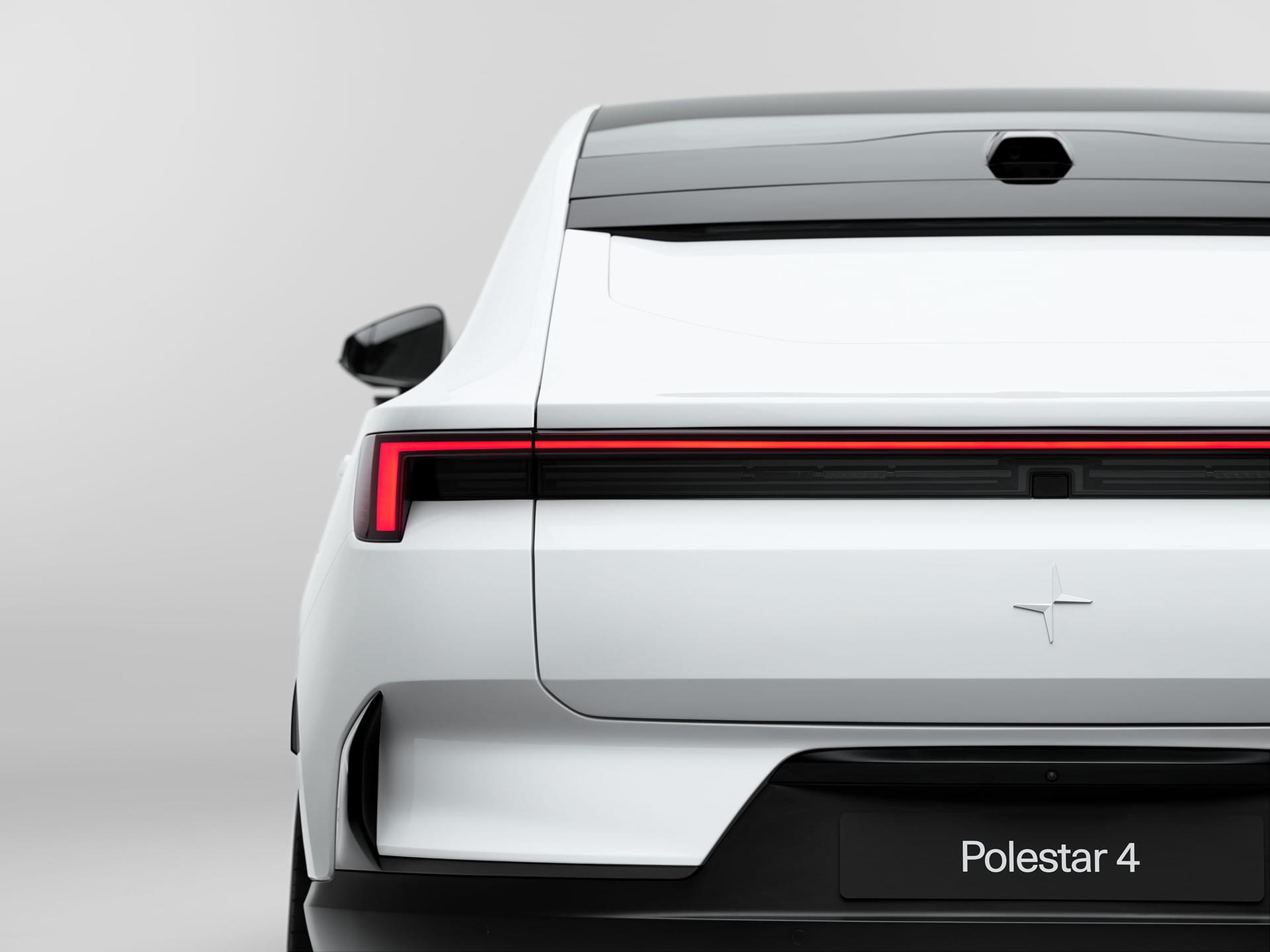Comparison with Global EV Markets: Insights from Canada and the USA
wordpress-Default June 27, 2024 0 COMMENTSThe electric vehicle (EV) market has seen exponential growth over the past decade, with countries around the world adopting various strategies to promote the transition from internal combustion engine vehicles to electric alternatives. Among these, Canada and the USA have shown significant progress, yet their approaches and achievements offer a distinct contrast when compared with leading global EV markets such as Norway, China, and the European Union. This blog delves into a comprehensive comparison of the EV markets in Canada and the USA with these global leaders, highlighting policies, adoption rates, infrastructure development, and future prospects. Government Policies and Incentives Canada and the USA: In North America, both Canada and the USA have implemented a range of policies to encourage EV adoption. The USA offers federal tax credits up to $7,500 for EV purchases, although these credits phase out after manufacturers sell 200,000 units. Various states also provide additional incentives, rebates, and tax credits. California, in particular, leads with aggressive policies promoting zero-emission vehicles. Canada, on the other hand, provides incentives at both federal and provincial levels. The federal government offers rebates up to $5,000 for EV purchases, while provinces like British Columbia and Quebec offer additional incentives. Canada’s Zero-Emission Vehicle (ZEV) mandate aims for 100% of new light-duty vehicle sales to be zero-emission by 2035. Global Leaders: In comparison, Norway is often cited as the benchmark for EV policies. The Norwegian government has eliminated import taxes, VAT, and road tolls for EVs while offering free parking and charging. This comprehensive incentive structure has resulted in EVs accounting for over 80% of new car sales in Norway. China leads in terms of production and sales volumes, driven by substantial government subsidies, tax exemptions, and stringent regulations on fuel consumption. The Chinese government has also invested heavily in charging infrastructure and supports domestic manufacturers through incentives and favorable policies. The European Union has implemented stringent CO2 emission targets, incentivizing manufacturers to produce EVs. Countries like Germany, France, and the Netherlands offer substantial subsidies, tax breaks, and investments in charging infrastructure. The EU’s Green Deal further emphasizes the transition to sustainable transportation. Adoption Rates and Market Penetration Canada and the USA: EV adoption in the USA and Canada is growing but at a slower pace compared to some global counterparts. In 2023, EVs accounted for approximately 5% of new car sales in the USA and around 7% in Canada. California continues to lead in the USA with over 15% of new car sales being EVs, driven by state-specific policies and infrastructure investments. Global Leaders: Norway’s adoption rate is unparalleled, with EVs making up the majority of new car sales. This is a direct result of the aggressive incentives and policies in place for over a decade. China, despite being the largest auto market globally, has seen EVs reach about 15% of new car sales. The Chinese market benefits from domestic manufacturing giants like BYD and NIO, which play crucial roles in both domestic and international markets. In the EU, the adoption rate varies by country but is generally higher than North America. Germany and the Netherlands are leading with around 20% of new car sales being EVs, supported by strong government incentives and growing consumer awareness about sustainability. Charging Infrastructure Canada and the USA: The development of EV charging infrastructure in North America is progressing steadily. The USA has over 100,000 public charging points, with significant investments planned under the Biden administration’s infrastructure bill. The aim is to build a national network of 500,000 chargers by 2030. Canada’s charging network, though smaller, is expanding rapidly with government support. Initiatives like Natural Resources Canada’s Zero-Emission Vehicle Infrastructure Program (ZEVIP) are funding the installation of EV chargers nationwide, with a target to deploy thousands of new charging stations by 2027. Global Leaders: China boasts the largest public charging network globally, with over 2 million charging points. The government’s focus on infrastructure, combined with the world’s largest EV market, ensures rapid growth and availability of charging stations. Europe is also making significant strides. The EU’s Alternative Fuels Infrastructure Directive mandates member states to develop comprehensive charging networks. Germany, France, and the Netherlands are leading with extensive charging infrastructures, including ultra-fast chargers. Norway, despite its smaller geographic size, has an extensive and accessible charging network, including numerous fast chargers. This accessibility plays a crucial role in Norway’s high EV adoption rates. Environmental Impact and Sustainability Canada and the USA: North America’s transition to EVs is driven by a mix of environmental concerns and economic incentives. Both countries aim to reduce greenhouse gas emissions through increased EV adoption. The USA’s re-entry into the Paris Agreement underlines its commitment to reducing emissions, with EVs playing a crucial role in this strategy. Canada’s climate plan targets net-zero emissions by 2050, with EVs as a cornerstone of this policy. Provinces like Quebec and British Columbia have set ambitious targets for EV adoption, further contributing to national goals. Global Leaders: Norway’s EV policies are part of a broader sustainability agenda aiming for zero emissions from the transport sector. The country’s abundant renewable energy resources, particularly hydropower, ensure that EVs are charged using clean energy, maximizing environmental benefits. China’s focus on EVs is also motivated by environmental concerns, particularly air quality in urban areas. The government’s push for renewable energy integration with EV infrastructure is a key component of its strategy to reduce pollution and greenhouse gas emissions. The EU’s Green Deal emphasizes sustainable mobility, with EVs expected to play a significant role in achieving climate neutrality by 2050. European countries are investing heavily in renewable energy to ensure that EVs contribute to a significant reduction in carbon emissions. Future Prospects and Challenges Canada and the USA: The future of the EV market in North America looks promising with continued investments and supportive policies. Challenges remain, particularly in terms of scaling up charging infrastructure, ensuring grid stability, and reducing vehicle costs. However, advancements in battery technology, such as solid-state batteries, and increasing competition among manufacturers are expected to drive down costs
READ MOREThe Rise of Electric Two-Wheelers and Micro-Mobility in the USA and Canada
wordpress-Default June 26, 2024 0 COMMENTSElectric two-wheelers and micro-mobility solutions are revolutionizing urban transportation in the USA and Canada. As cities grapple with traffic congestion, air pollution, and the need for sustainable mobility options, electric scooters, bikes, and other micro-mobility vehicles are emerging as popular, efficient, and environmentally friendly alternatives. The Evolution of Micro-Mobility Micro-mobility refers to a range of small, lightweight vehicles operating at speeds typically below 25 km/h (15.5 mph) and ideal for short trips. This category includes electric scooters (e-scooters), electric bikes (e-bikes), and other compact electric vehicles. The concept of micro-mobility has gained traction due to several converging factors: Urbanization: Increasing urban populations are straining traditional transportation systems. Micro-mobility offers a flexible solution to navigate crowded city streets. Environmental Concerns: Electric two-wheelers produce zero emissions at the point of use, contributing to cleaner air and reduced greenhouse gas emissions. Technological Advances: Improvements in battery technology, lightweight materials, and digital connectivity have made electric two-wheelers more viable and appealing. Convenience and Cost: Micro-mobility solutions are often more affordable and convenient for short trips compared to cars or public transit. Growth of Electric Two-Wheelers in North America The adoption of electric two-wheelers has been particularly notable in major cities across the USA and Canada. Companies like Lime, Bird, and Spin have deployed fleets of shared e-scooters in urban areas, while e-bike sharing programs have also gained popularity. United States In the USA, cities like Los Angeles, San Francisco, and Austin have embraced e-scooters and e-bikes as part of their transportation ecosystems. These cities have implemented regulations and infrastructure to support micro-mobility, including designated parking zones, dedicated bike lanes, and safety guidelines. Los Angeles, for instance, has created an extensive network of bike lanes and designated e-scooter parking areas. The city has also introduced safety measures, such as speed limits and helmet requirements, to ensure the safe integration of micro-mobility into urban traffic. Canada In Canada, cities like Toronto, Montreal, and Vancouver are leading the charge in adopting electric two-wheelers. Toronto’s bike-sharing program, Bike Share Toronto, has integrated e-bikes into its fleet, providing residents and tourists with an efficient and eco-friendly mode of transportation. Montreal, known for its extensive cycling infrastructure, has seen a significant increase in the use of e-bikes. The city’s public bike-sharing system, BIXI, introduced electric bikes to enhance the convenience and accessibility of cycling, especially in hilly areas. Benefits of Electric Two-Wheelers and Micro-Mobility The rise of electric two-wheelers and micro-mobility offers numerous benefits to individuals, cities, and the environment. Reduced Traffic Congestion: By offering an alternative to cars for short trips, e-scooters and e-bikes help alleviate traffic congestion, leading to smoother and faster commutes. Environmental Impact: Electric two-wheelers produce no tailpipe emissions, significantly reducing the carbon footprint of urban transportation. They also consume less energy compared to traditional vehicles. Cost Savings: Micro-mobility solutions are often cheaper than car ownership or rideshare services. Users can save on fuel, parking, and maintenance costs. Health Benefits: E-bikes encourage physical activity, promoting a healthier lifestyle. Even with electric assistance, users still engage in moderate exercise, improving cardiovascular health and overall fitness. Accessibility: Electric two-wheelers provide an accessible transportation option for people who may have difficulty using traditional bikes or walking long distances. They can be particularly beneficial for seniors and individuals with mobility challenges. Flexibility: Micro-mobility solutions offer flexibility in trip planning. Users can easily navigate through traffic, take shortcuts, and park closer to their destinations. Challenges and Solutions Despite their benefits, the adoption of electric two-wheelers and micro-mobility faces several challenges that need to be addressed to ensure their long-term success and integration into urban transportation systems. Safety Concerns: The safety of e-scooter and e-bike riders is a primary concern. Accidents involving these vehicles have raised questions about rider behavior, infrastructure, and regulations. Cities need to implement safety measures, such as dedicated bike lanes, proper lighting, and education campaigns to promote responsible riding. Infrastructure Development: The lack of adequate infrastructure, such as bike lanes and parking facilities, can hinder the adoption of micro-mobility solutions. Investment in infrastructure is crucial to create a safe and convenient environment for riders. Regulatory Issues: The regulatory landscape for micro-mobility is still evolving. Clear and consistent regulations are needed to address issues such as vehicle speed limits, helmet requirements, and rider behavior. Collaboration between municipalities, micro-mobility companies, and stakeholders is essential to develop effective policies. Environmental Impact of Batteries: While electric two-wheelers produce no emissions, the environmental impact of battery production and disposal is a concern. Advances in battery technology, recycling programs, and sustainable manufacturing practices are needed to mitigate these impacts. Equity and Accessibility: Ensuring that micro-mobility solutions are accessible to all segments of the population, including low-income communities, is vital. Subsidies, equitable distribution of vehicles, and inclusive planning can help address this issue. Future Prospects The future of electric two-wheelers and micro-mobility in the USA and Canada looks promising, with several trends and developments shaping their growth. Technological Innovations: Continued advancements in battery technology, vehicle design, and connectivity will enhance the performance, range, and user experience of electric two-wheelers. Smart features, such as GPS tracking, mobile app integration, and real-time data analytics, will further improve convenience and safety. Integration with Public Transit: Integrating micro-mobility solutions with public transit systems can create a seamless and efficient transportation network. Multi-modal transportation hubs, where users can switch between e-scooters, e-bikes, buses, and trains, will enhance connectivity and convenience. Sustainable Urban Planning: Cities are increasingly prioritizing sustainable urban planning to reduce reliance on cars and promote active transportation. This includes developing bike-friendly infrastructure, pedestrian zones, and mixed-use developments that encourage walking and cycling. Corporate Adoption: Businesses are recognizing the benefits of micro-mobility for employee commuting and last-mile delivery. Corporate partnerships with micro-mobility companies can provide employees with convenient and eco-friendly transportation options, while also reducing traffic congestion and parking demands. Electric two-wheelers and micro-mobility are transforming urban transportation in the USA and Canada. As cities strive to become more sustainable, efficient, and livable, these innovative solutions offer a compelling alternative to traditional modes of transport. By addressing challenges,
READ MOREElectric Vehicle Recycling and Disposal: A Critical Component of the EV Revolution
wordpress-Default June 25, 2024 0 COMMENTSAs electric vehicles (EVs) become increasingly prevalent on roads in the USA and Canada, the industry faces a critical challenge: how to effectively recycle and dispose of EV components, particularly the batteries. While EVs are celebrated for their potential to reduce greenhouse gas emissions and reliance on fossil fuels, their long-term environmental benefits depend significantly on the ability to sustainably manage their end-of-life stages. This blog explores the current state, challenges, and future prospects of electric vehicle recycling and disposal in North America. The Importance of EV Recycling The push towards electric vehicles is driven by the urgent need to combat climate change and reduce air pollution. However, EVs present a new set of environmental challenges once they reach the end of their lifecycle. The batteries that power EVs are particularly problematic. Composed of valuable and potentially hazardous materials like lithium, cobalt, nickel, and manganese, these batteries require careful handling and disposal to avoid environmental contamination and resource wastage. Recycling EV batteries and components is crucial for several reasons: Resource Conservation: Many materials used in EV batteries are finite and sourced through environmentally damaging mining processes. Recycling can recover these valuable materials, reducing the need for new extraction. Environmental Protection: Improper disposal of EV batteries can lead to soil and water contamination due to the leakage of toxic substances. Economic Benefits: Recycling can reduce the costs associated with producing new batteries, lower the prices of EVs, and create new economic opportunities in the recycling industry. Current Recycling Practices in the USA and Canada North America is home to several pioneering companies and initiatives focused on EV recycling. The processes typically involve several stages: collection, dismantling, shredding, and material recovery. In the USA, companies like Redwood Materials and Li-Cycle are leading the charge. Redwood Materials, founded by Tesla co-founder JB Straubel, focuses on recovering materials like cobalt, nickel, and lithium from used batteries. Li-Cycle, another major player, uses a unique hydrometallurgical process to recycle up to 95% of the materials in a lithium-ion battery. In Canada, companies like Lithion Recycling are at the forefront. Lithion’s process involves a combination of mechanical and hydrometallurgical methods to achieve high recovery rates of critical materials. The Canadian government is also actively supporting research and development in this area, recognizing the strategic importance of creating a robust domestic recycling infrastructure. Challenges in EV Recycling Despite the progress, the industry faces significant challenges: Technological Barriers: The recycling processes for EV batteries are complex and still evolving. Efficiently separating and recovering materials without degrading their quality is technically challenging. Economic Viability: The high cost of recycling, compared to the value of the recovered materials, can make it less economically attractive. This is exacerbated by fluctuating prices for raw materials like lithium and cobalt. Regulatory Hurdles: Regulations around the transportation and handling of used batteries vary widely across regions, complicating the logistics of recycling. Collection and Logistics: Establishing efficient collection systems for end-of-life batteries is crucial. Given the geographic size of the USA and Canada, this poses significant logistical challenges. Consumer Awareness: Many consumers are unaware of how to properly dispose of their EV batteries, leading to suboptimal recycling rates. Innovations and Future Prospects To address these challenges, several innovations and policy initiatives are underway: Second-Life Applications: Before recycling, EV batteries can often be repurposed for less demanding applications, such as stationary energy storage. This extends their useful life and provides additional economic value. Advanced Recycling Technologies: Research is ongoing to develop more efficient and cost-effective recycling technologies. For instance, direct recycling processes aim to recover and reuse entire battery components rather than breaking them down into raw materials. Policy Support: Governments in the USA and Canada are increasingly recognizing the importance of EV recycling. Policies like extended producer responsibility (EPR) laws, which make manufacturers responsible for the end-of-life management of their products, are being considered and implemented. Public-Private Partnerships: Collaborations between governments, private companies, and research institutions are critical. These partnerships can drive innovation, share best practices, and create economies of scale. Consumer Education: Raising awareness about the importance of proper disposal and recycling can significantly improve recycling rates. Programs aimed at educating consumers and providing easy access to recycling facilities are essential. Case Studies Several case studies illustrate the progress and potential of EV recycling: Redwood Materials (USA): This company’s innovative approach involves collecting end-of-life batteries from across North America and using a combination of mechanical and chemical processes to recover valuable materials. Their goal is to create a closed-loop system where old batteries provide the raw materials for new ones. Li-Cycle (Canada): Li-Cycle’s “spoke and hub” model involves local collection and processing facilities (spokes) feeding into a centralized refining facility (hub). This model reduces transportation costs and environmental impact while maximizing material recovery. Tesla (USA): Tesla’s Gigafactory in Nevada not only produces new batteries but also has an on-site recycling facility. This integration helps Tesla reduce costs and environmental impact by reusing materials from old batteries. Electric vehicle recycling and disposal are critical components of the EV ecosystem. As the number of EVs on the road continues to grow, so does the urgency of developing sustainable solutions for managing their end-of-life stages. The USA and Canada are making significant strides in this area, with innovative companies, supportive policies, and growing public awareness. However, the challenges are substantial, and continued investment in research, technology, and infrastructure is essential. By addressing these challenges head-on, North America can not only mitigate the environmental impact of EVs but also establish itself as a leader in the global transition to sustainable transportation. The path forward involves a combination of advanced technologies, robust policies, and active collaboration among all stakeholders. Through these efforts, the full environmental benefits of electric vehicles can be realized, ensuring a cleaner, more sustainable future for all.
READ MOREThe Future of EVs in Public Transportation in Canada and the USA
wordpress-Default June 25, 2024 0 COMMENTSElectric vehicles (EVs) are no longer a distant dream but an imminent reality reshaping the landscape of public transportation. As governments, corporations, and individuals recognize the environmental and economic benefits of EVs, the transition from conventional fossil fuel-powered public transport systems to electric-powered alternatives is accelerating. This blog explores the current state, advancements, challenges, and future prospects of EVs in public transportation in Canada and the USA. Current State of EVs in Public Transportation Public transportation systems in North America are undergoing significant changes, with electric buses, trains, and even ferries beginning to replace their diesel and gasoline counterparts. In cities like Los Angeles, New York, Vancouver, and Toronto, electric buses are becoming a common sight. The adoption of electric buses is driven by their zero-emission nature, which aligns with the global push towards reducing carbon footprints. In the USA, transit agencies are progressively investing in electric buses. For instance, the Los Angeles County Metropolitan Transportation Authority (LA Metro) has committed to transitioning its entire fleet to zero-emission buses by 2030. Similarly, New York City’s Metropolitan Transportation Authority (MTA) aims to have an all-electric bus fleet by 2040. These ambitious plans are supported by federal and state incentives, reflecting a strong policy commitment to sustainable transportation. In Canada, the push towards electrification of public transport is equally robust. The Canadian Urban Transit Research and Innovation Consortium (CUTRIC) is spearheading efforts to advance electric and hydrogen fuel cell buses. Cities like Toronto and Vancouver are making significant strides. Toronto Transit Commission (TTC) operates one of the largest electric bus fleets in North America, and TransLink in Vancouver is investing heavily in electric buses and infrastructure. Advancements in EV Technology for Public Transport Technological advancements are pivotal in the transition to electric public transportation. The development of high-capacity batteries and fast-charging infrastructure is enabling longer routes and reduced downtime for buses. For example, the latest electric buses can travel up to 300 miles on a single charge, making them viable for most urban and suburban routes. Battery technology continues to evolve, with solid-state batteries on the horizon. These batteries promise higher energy density, faster charging times, and longer lifespans compared to current lithium-ion batteries. Moreover, advancements in charging infrastructure, such as inductive charging and ultra-fast chargers, are reducing the operational constraints of electric buses. In addition to buses, electric trains are gaining traction. Both Canada and the USA are investing in electrifying existing rail lines and developing new electric train systems. For instance, the California High-Speed Rail project aims to connect major cities with a fast, reliable, and sustainable rail network. Similarly, Ontario is working on electrifying the GO Transit rail network to provide cleaner and more efficient transportation. Environmental Impact and Benefits The environmental benefits of transitioning to electric public transportation are profound. EVs produce zero tailpipe emissions, significantly reducing urban air pollution. This reduction in pollutants like nitrogen oxides (NOx) and particulate matter (PM) can lead to improved public health outcomes, particularly in densely populated urban areas. Moreover, the shift to electric public transport aligns with broader climate goals. Transportation is a significant source of greenhouse gas (GHG) emissions in North America. Electrifying buses, trains, and other public transport modes can substantially decrease these emissions, helping Canada and the USA meet their climate commitments under the Paris Agreement. Beyond reducing emissions, EVs in public transportation contribute to noise pollution reduction. Electric buses and trains operate much more quietly than their diesel counterparts, enhancing the quality of life in urban areas. Economic Impact and Job Creation The transition to electric public transportation also presents significant economic opportunities. The manufacturing, deployment, and maintenance of EVs create jobs and stimulate economic growth. For instance, the production of electric buses and the development of charging infrastructure generate employment in manufacturing, construction, and engineering sectors. In the USA, the push towards electrification is supported by initiatives like the American Jobs Plan, which allocates substantial funding for EV infrastructure and manufacturing. Similarly, Canada’s federal and provincial governments are investing in the EV sector, recognizing its potential for job creation and economic development. Furthermore, the operational cost savings associated with electric public transport are noteworthy. EVs generally have lower maintenance and fuel costs compared to conventional vehicles. These savings can be reinvested into public transport systems, enhancing service quality and expanding coverage. Challenges and Barriers to Adoption Despite the promising prospects, several challenges hinder the widespread adoption of EVs in public transportation. One of the primary barriers is the high upfront cost of electric buses and trains. Although the total cost of ownership is often lower over the vehicle’s lifespan, the initial investment remains a significant hurdle for many transit agencies. Additionally, the development of charging infrastructure is crucial. Public transport systems require robust and widespread charging networks to ensure operational efficiency. This infrastructure development demands substantial investment and coordination between government bodies, private companies, and utility providers. Range anxiety, although more commonly associated with personal electric vehicles, is also a concern for public transport operators. Ensuring that electric buses can complete their routes without frequent recharging is essential for maintaining service reliability. Advances in battery technology and strategic deployment of charging stations are critical to addressing this issue. Future Prospects and Innovations Looking ahead, the future of EVs in public transportation in Canada and the USA appears bright, driven by ongoing technological advancements, supportive policies, and increasing public awareness of environmental issues. Innovations such as autonomous electric buses and smart grid integration are set to revolutionize public transport systems. Autonomous electric buses, already being tested in some cities, promise to enhance efficiency and reduce operational costs. These self-driving vehicles can optimize routes, reduce traffic congestion, and improve safety by minimizing human error. Smart grid integration is another exciting development. By connecting EVs to the grid, public transport systems can optimize energy use, balance demand, and even return energy to the grid during peak times. This bidirectional energy flow can enhance grid stability and reduce overall energy costs. Moreover, the concept of Mobility-as-a-Service (MaaS) is gaining
READ MOREUnveiling the Future of Electric Mobility: The KIA Niro EV In the ever-evolving landscape of electric vehicles, the KIA Niro EV emerges as a trailblazer, offering buyers a compelling blend of eco-friendly performance, cutting-edge technology, and practicality. With its sleek design, impressive range, and array of features, the Niro EV represents a significant step forward in the transition to sustainable transportation. Let’s delve deeper into what makes this electric crossover a standout choice for buyers in today’s market. Introduction to the KIA Niro EV: The KIA Niro EV, also known as the KIA e-Niro in some markets, is an all-electric compact crossover SUV that marks KIA’s foray into the realm of electric mobility. Building upon the success of its hybrid and plug-in hybrid counterparts, the Niro EV combines the versatility and spaciousness of a crossover with the efficiency and zero-emissions capability of an electric powertrain. Exterior Design and Features: From its sleek silhouette to its aerodynamic profile, the KIA Niro EV exudes a sense of modernity and sophistication. Its clean lines, sculpted body panels, and distinctive LED lighting elements contribute to its contemporary aesthetic, while subtle design cues hint at its eco-friendly credentials. Available in a range of eye-catching colors and trims, the Niro EV offers buyers the opportunity to personalize their driving experience and make a statement on the road. Additionally, practical features such as roof rails, a hands-free power liftgate, and heated side mirrors enhance convenience and functionality for everyday use. Interior Comfort and Technology: Step inside the KIA Niro EV, and you’ll find a spacious and well-appointed cabin that’s designed with both driver and passenger comfort in mind. High-quality materials, soft-touch surfaces, and ergonomic seating provide a premium feel, while ample headroom and legroom ensure that occupants of all sizes can ride in comfort. Technologically, the Niro EV comes equipped with a host of advanced features to enhance connectivity, convenience, and safety. A large touchscreen infotainment system serves as the centerpiece of the dashboard, offering seamless integration with smartphone apps, navigation, and entertainment options. Furthermore, driver-assistance technologies such as adaptive cruise control, lane-keeping assist, and automatic emergency braking help to enhance safety and peace of mind on the road. Electric Powertrain and Performance: At the heart of the KIA Niro EV lies a powerful and efficient electric powertrain that delivers exhilarating performance while minimizing environmental impact. Powered by a high-capacity battery pack, the Niro EV offers impressive range on a single charge, making it suitable for both daily commuting and longer journeys. With instant torque delivery and responsive acceleration, the Niro EV offers a dynamic driving experience that’s both engaging and enjoyable. Whether navigating city streets or cruising down the highway, this electric crossover provides a smooth and quiet ride that’s free from the noise and vibrations associated with traditional combustion engines. Benefits of Driving the KIA Niro EV: For buyers considering an electric vehicle, the KIA Niro EV offers a multitude of benefits that make it a compelling choice: Environmental Sustainability: By opting for an all-electric vehicle, drivers can significantly reduce their carbon footprint and contribute to a cleaner and greener future. With zero tailpipe emissions, the Niro EV helps to improve air quality and mitigate the impacts of climate change. Cost Savings: Electric vehicles are inherently more energy-efficient than their gasoline-powered counterparts, resulting in lower fuel costs over time. Additionally, the Niro EV qualifies for various incentives and tax credits, further reducing the total cost of ownership for buyers. Convenience and Accessibility: With a growing network of charging stations and improved infrastructure, electric vehicles are becoming increasingly convenient and accessible for drivers. The Niro EV’s fast-charging capability allows for quick and easy recharging on the go, while at-home charging options provide added flexibility for daily use. Advanced Features and Technology: From its intuitive infotainment system to its comprehensive suite of driver-assistance technologies, the Niro EV is packed with advanced features to enhance the driving experience. Whether it’s staying connected on the road or staying safe in traffic, the Niro EV offers a range of cutting-edge capabilities to meet the needs of modern drivers. Launching Date and Availability: The KIA Niro EV was first launched in select markets in [Year of Launch], with availability expanding to additional regions in subsequent years. As of [Current Year], the Niro EV is widely available in many countries around the world, offering buyers the opportunity to experience the future of electric mobility firsthand. The KIA Niro EV represents a bold step forward in the evolution of electric vehicles, combining impressive range, advanced technology, and stylish design in a practical and affordable package. Whether you’re drawn to its eco-friendly credentials, its spacious and comfortable interior, or its engaging driving dynamics, the Niro EV offers something for everyone. As electric vehicles continue to gain traction in the automotive market, the Niro EV stands out as a shining example of KIA’s commitment to innovation, sustainability, and customer satisfaction.
READ MOREHonda all-Electric Prologue Introducing the All-New All-Electric Prologue: A Glimpse into the Future of Driving In the realm of automotive innovation, there’s a new star on the horizon – the all-new, all-electric Prologue. This groundbreaking vehicle marks a pivotal moment in the evolution of electric cars, promising not only eco-friendly driving but also a thrilling and luxurious experience on the road. Let’s take a closer look at what makes the Prologue a true game-changer. Embracing Sustainability: At the heart of the Prologue is its commitment to sustainability. With zero emissions and a reliance on electric power, this vehicle represents a significant step towards reducing our carbon footprint and preserving the environment for future generations. By eliminating the need for fossil fuels, the Prologue leads the charge in the transition to a greener, cleaner automotive industry. Cutting-Edge Technology: Prepare to be dazzled by the cutting-edge technology packed into the Prologue. From advanced battery systems that offer impressive range to state-of-the-art driver-assistance features, every aspect of this vehicle is designed to elevate your driving experience. With seamless connectivity and intuitive controls, the Prologue brings the future of automotive technology to your fingertips. Unparalleled Performance: Don’t let its eco-friendly credentials fool you – the Prologue is a beast on the road. Thanks to its powerful electric motors and precision engineering, this vehicle delivers exhilarating performance that rivals its gas-powered counterparts. Whether you’re cruising down the highway or navigating tight city streets, the Prologue offers a smooth and responsive ride that will leave you breathless. Luxurious Design: Step inside the Prologue and prepare to be transported to a world of luxury and sophistication. From the premium materials adorning every surface to the ergonomic design that prioritizes comfort and convenience, every detail of this vehicle exudes elegance. With ample space for passengers and cargo alike, the Prologue seamlessly combines style and practicality in a way that is sure to impress even the most discerning drivers. A Vision of the Future: In many ways, the Prologue represents more than just a car – it’s a vision of the future of driving. With its bold design, cutting-edge technology, and unwavering commitment to sustainability, this vehicle embodies the values and aspirations of a new generation of drivers. As we look ahead to a world where electric cars are the norm rather than the exception, the Prologue stands as a shining example of what’s possible when innovation and imagination collide. The all-new, all-electric Prologue is more than just a car – it’s a statement. A statement about the future we want to build, where sustainability and luxury go hand in hand, and where driving is not just a means of transportation but an experience to be savored. With its groundbreaking design, state-of-the-art technology, and uncompromising performance, the Prologue is poised to redefine the automotive industry for years to come. So buckle up and get ready for the ride of a lifetime – the future is here, and it looks electrifying.
READ MOREAnalysis of the Top 10 Best-Selling Electric Vehicles in the US and Canada in 2023 The year 2023 witnessed a significant surge in the adoption of electric vehicles (EVs) in the United States and Canada, fueled by growing environmental consciousness, technological advancements, and governmental incentives. In this analysis, we delve into the top 10 best-selling electric vehicles in both countries, shedding light on their features, market performance, and factors contributing to their popularity. Tesla Model 3: Retaining its position as a frontrunner in the EV market, the Tesla Model 3 continued to dominate sales in 2023. Renowned for its sleek design, impressive range, and cutting-edge autopilot features, the Model 3 appealed to a wide range of consumers seeking both performance and sustainability. Tesla Model Y: Following closely behind its predecessor, the Tesla Model Y secured a prominent spot among the top-selling EVs. With its spacious interior, long-range capabilities, and robust safety features, the Model Y attracted families and adventure enthusiasts alike. Chevrolet Bolt EV: Chevrolet’s Bolt EV maintained its popularity in 2023, offering an affordable yet efficient option for eco-conscious consumers. With its practical design, ample cargo space, and competitive range, the Bolt EV continued to appeal to urban commuters and environmentally aware drivers. Nissan Leaf: As one of the pioneers in the electric vehicle market, the Nissan Leaf remained a formidable contender in 2023. Boasting a reliable performance, comfortable ride, and user-friendly features, the Leaf appealed to budget-conscious consumers and urban dwellers seeking a sustainable driving option. Ford Mustang Mach-E: Introduced as Ford’s foray into the electric vehicle segment, the Mustang Mach-E garnered significant attention and sales in 2023. With its iconic design, exhilarating performance, and advanced technology, the Mach-E attracted both traditional Mustang enthusiasts and new adopters of electric mobility. Volkswagen ID.4: Volkswagen’s ID.4 made waves in the EV market, offering a blend of practicality, versatility, and German engineering. With its spacious interior, impressive range, and sleek design, the ID.4 appealed to drivers looking for a reliable electric SUV with a touch of European flair. Audi e-tron: Audi’s e-tron continued to captivate consumers with its luxurious amenities, refined driving experience, and cutting-edge technology. As one of the leading luxury electric SUVs, the e-tron appealed to discerning buyers seeking premium comfort and performance without compromising on sustainability. Hyundai Kona Electric: Hyundai’s Kona Electric emerged as a top choice for value-conscious consumers, offering an affordable yet feature-packed electric crossover. With its efficient powertrain, generous cargo space, and extensive standard features, the Kona Electric appealed to practical-minded drivers seeking an eco-friendly driving solution. Kia Niro EV: The Kia Niro EV gained traction in 2023, thanks to its blend of efficiency, versatility, and affordability. With its comfortable interior, commendable range, and comprehensive warranty coverage, the Niro EV appealed to budget-conscious families and urban commuters alike. Porsche Taycan: Porsche’s Taycan represented the epitome of luxury and performance in the electric vehicle market. With its breathtaking acceleration, opulent interior, and state-of-the-art technology, the Taycan catered to affluent buyers seeking an exhilarating driving experience coupled with environmental consciousness. The year 2023 witnessed a remarkable surge in the popularity of electric vehicles in the United States and Canada, with a diverse array of models capturing consumers’ attention and driving significant sales growth. From affordable compact cars to luxurious SUVs and high-performance sports cars, the top 10 best-selling EVs exemplify the industry’s evolution towards sustainable mobility and innovation. As technology continues to advance and infrastructure expands, the electric vehicle market is poised for further growth and transformation in the years to come.
READ MOREIntroduction: Explore the Complete Guide to Installing Tesla Home Chargers, encompassing insights into Tesla Home Charging Stations, available choices, infrastructure prerequisites, installation expenditures, and strategies to economize via EV Life. Tesla’s Pioneering Role in Electric Vehicle Charging: As electric vehicle popularity surges, Tesla stands as a frontrunner in EV innovation. Redefining electric vehicle charging, Tesla integrates superior equipment, innovative technology, a robust network, and reliable performance. Unraveling the Importance of Home Charging with Tesla: Delve into the significance of home charging, why Tesla sets the standard, the installation procedures for Tesla chargers, and the advantages of opting for Tesla for your charging requirements. Tesla Home Charging Options: Battery charging is a pivotal concern for EV drivers. Establishing a home charging station alleviates “range anxiety” and ensures convenient and reliable EV charging from the comfort of your home. Home charging stations prove cheaper, more accessible, and allow for off-peak hour charging, minimizing energy expenses. Levels of Tesla Charging: Tesla offers various charging levels, each operating at distinct voltage levels. Level 1 Charging: Utilizes standard 120V electrical outlets, providing 1.4 kW of power. Level 2 Charging: Utilizes 240V outlets, delivering 3.7-17.2 kW of power. Level 3 Charging (Superchargers): High-powered 480V circuits, delivering up to 250 kW of power. Installing Superchargers at Home: Despite their fast charging capabilities, Superchargers aren’t suitable for home use due to high costs, potential battery degradation, and lack of availability. DIY vs. Professional Installation: Certified Tesla installation technicians can assess your electrical systems, recommend suitable chargers, and conduct installations. The installation process involves standard items and may require additional components for complex setups. Step-by-Step Installation Guide: Before installing a Tesla home charger, evaluate your electrical system, make necessary upgrades, select a suitable location, choose the charger model, purchase the charger, and follow installation instructions meticulously. Saving Money on Tesla Home Charging with EV Life: Numerous federal and state EV incentive programs aid in reducing Tesla charger purchase costs. Power companies also offer rebates for qualified drivers. EV Life provides financing solutions to help maximize savings on electric vehicle purchases and charger installations. Conclusion: Unveil the opportunities to economize on Tesla home charging while contributing to environmental sustainability. Get pre-qualified with EV Life today to discover potential savings on electric vehicles and Tesla home chargers.
READ MOREDiscover the essentials of electric car insurance, from securing favorable deals to cutting costs on your electric vehicle (EV) to counterbalance the higher insurance expenses. As electric cars gain popularity, grasping insurance costs and choices becomes paramount for prospective owners contemplating the switch. Unlike traditional gasoline cars, insuring an EV involves unique factors. This exhaustive handbook delves into electric car insurance intricacies, covering cost determinants, money-saving techniques, and more. Understanding Electric Vehicle Insurance Costs The expense of insuring an electric car can vary significantly due to multiple factors. Typically, premiums for electric car insurance surpass those for conventional gasoline cars. Recent research indicates that insuring an electric vehicle costs around 20% more on average than insuring a gasoline vehicle. However, bear in mind that your electric car insurance cost may fluctuate based on factors like your EV’s make and model, driving history, age, location, and your chosen auto insurance provider. For instance, insuring high-end luxury EV models such as the Tesla Model X or Rivian R1S might be notably pricier than insuring more economical options like the Nissan LEAF or Chevrolet Bolt EV. Understanding the Elevated Costs of Electric Vehicle Insurance Several factors contribute to the higher insurance costs associated with electric vehicles compared to their gasoline counterparts: Higher Repair Expenses: Electric vehicles often necessitate specialized equipment and trained technicians for repairs, which can inflate costs compared to traditional vehicles. Battery Replacement Costs: Replacing the battery pack in an electric vehicle can be a costly affair, sometimes running into thousands of dollars. Advanced Technology: Electric cars feature cutting-edge technology like advanced driver assistance systems (ADAS) and sophisticated electronics, which can be expensive to repair or replace if damaged. Limited Repair Facilities: With electric vehicles still relatively new, there are fewer repair shops equipped to handle EV repairs, potentially resulting in higher costs. Higher Vehicle Value: Many electric cars, especially luxury models, come with higher price tags than their gasoline-powered counterparts, leading to higher insurance premiums. Where to Obtain Electric Car Insurance Most car insurance companies offer electric car insurance, including Geico, Progressive, State Farm, and Allstate. Some insurers, such as Travelers and Liberty Mutual, even provide specialized EV auto insurance rates with unique discounts for electric vehicle owners. When shopping for electric car insurance, it’s crucial to compare quotes from multiple providers and carefully assess coverage options and exclusions. Consider factors such as liability and coverage limits, collision and comprehensive coverage, roadside assistance, and any EV-specific additional options. Tips for Reducing Electric Vehicle Insurance Costs While insuring an electric vehicle may be costlier than traditional cars, employing several strategies can help save money: Comparison Shopping: Compare quotes from various insurance providers to find the best rates and coverage options. Bundling Policies: Many insurers offer discounts for bundling your EV insurance with other policies like home or renters insurance. Maintaining a Clean Driving Record: A clean driving record devoid of accidents and violations can lower insurance premiums. Increasing Deductibles: Raising your insurance deductible can reduce monthly or annual premiums, although consider potential out-of-pocket costs in case of claims. Considering Usage-Based Insurance: Some insurers offer usage-based insurance programs that reward safe driving habits with lower rates. Leveraging Discounts: Many insurers provide discounts for safety features, anti-theft devices, low mileage, and completion of defensive driving courses. Exploring Tesla Auto Insurance Tesla offers its in-house insurance program called Tesla Insurance, tailored specifically for Tesla vehicles. Available in select states, Tesla Insurance aims to provide transparent and competitive insurance by handling claims and repairs directly, without involving an insurance company middleman. However, Tesla’s insurance comes with unique rules affecting insurance rates. Except for California residents, you’re required to use your Tesla’s built-in telematics system, the Tesla Safety Score, which monitors your driving behavior and becomes the primary factor in determining your insurance rates. While conventional insurers consider factors like claims history and driving record, Tesla Insurance heavily relies on real-time driving performance assessed by the Safety Score. This system incentivizes safe driving habits but introduces variability in insurance rates based on recent driving patterns. If you own a Tesla and reside in an area where Tesla Insurance operates, consider this option alongside quotes from traditional insurers. Additional Benefits of Going Electric While insurance considerations are crucial when transitioning to electric, embracing this eco-friendly technology offers numerous advantages beyond insurance rates: Lower Operating Costs: EVs boast lower operating expenses compared to gasoline vehicles, with reduced upkeep costs due to no need for regular oil changes or engine maintenance. Environmental Sustainability: EVs contribute to reducing greenhouse gas emissions and improving air quality by eliminating tailpipe emissions. High-Performance Driving: EVs provide responsive and exhilarating driving experiences with instant torque and smooth acceleration. Quiet and Comfortable Rides: Electric motors operate quietly, offering a serene cabin environment conducive to comfortable commutes or long journeys. Cutting-Edge Technology: EVs incorporate advanced technologies like ADAS, automated software updates, and expansive infotainment systems, providing the latest automotive innovations. Saving Money on Your EV In addition to insurance rates, various strategies can help save money on your electric vehicle: Tax Credits and Incentives: Federal and state governments offer tax credits, rebates, reduced registration fees, and other incentives to promote EV adoption. Charging at Home: Installing a home charging station can be cost-effective compared to relying solely on public charging stations. Utility Discounts: Some utility companies offer EV rebates, discounted rates, or special charging plans for electric vehicle owners. Maintenance and Fuel Savings: EVs typically require less maintenance than conventional vehicles and offer lower fuel costs due to cheaper charging. By understanding electric vehicle insurance intricacies and exploring cost-saving strategies, you can make informed decisions about owning an EV while minimizing financial impact. To explore the best deal for your preferred electric vehicle, get pre-qualified at EV Life and start saving money while contributing to a sustainable future.
READ MORE














